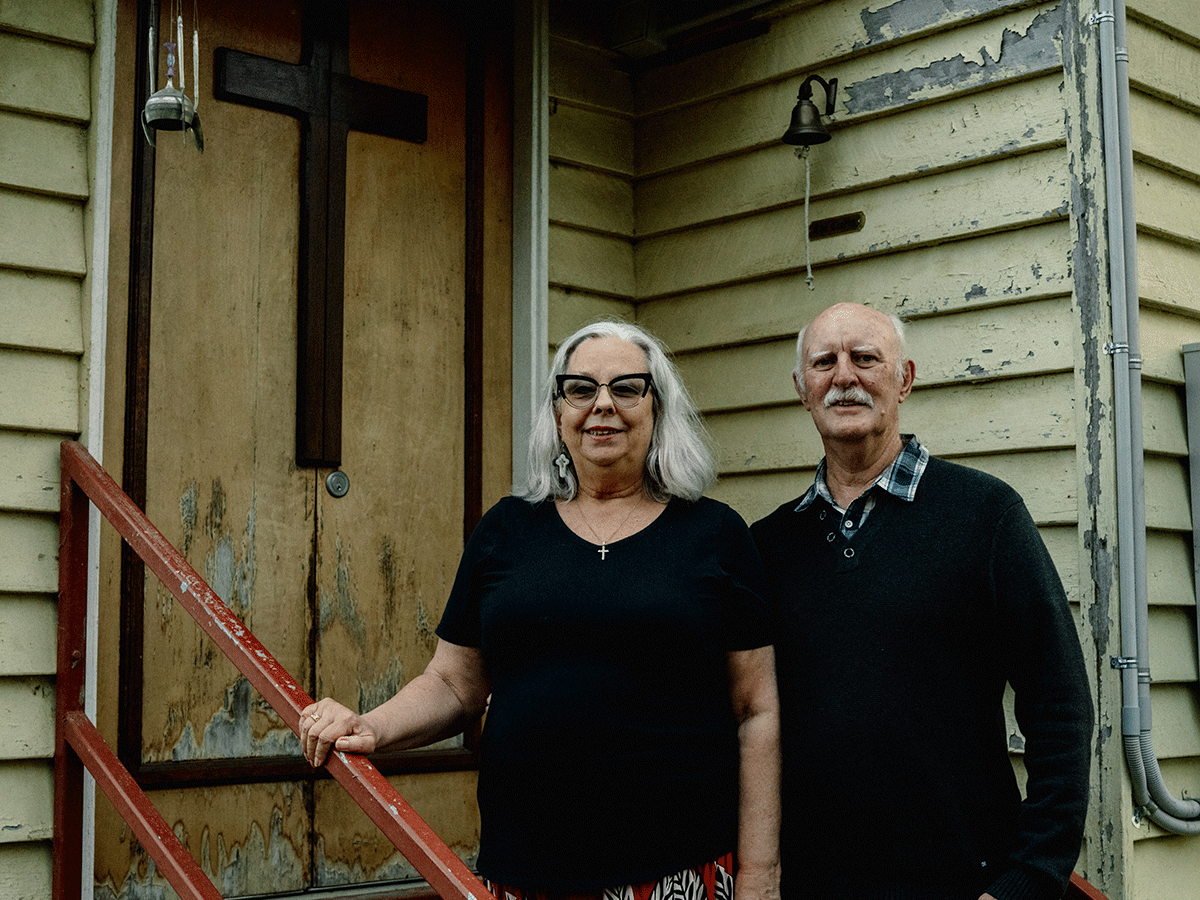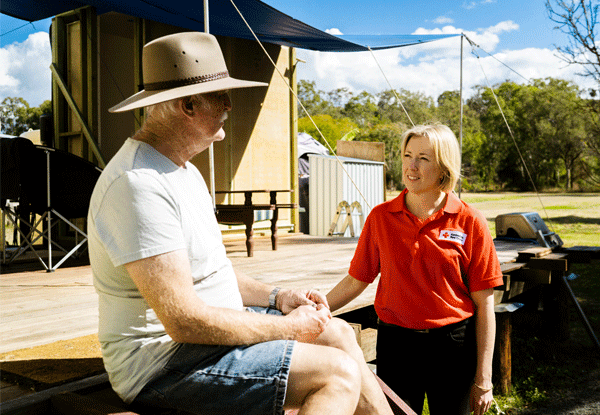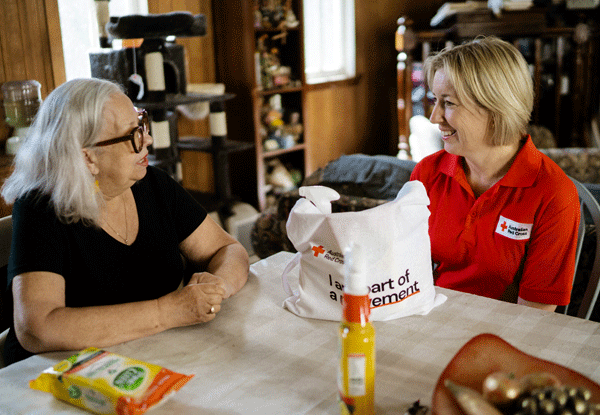Early response is critical
In the darkness at 2:30am, Ron and Fleur waded through waist-high water to find safety on the steps of the local hall.

“We had no warning. We were sleeping and all of a sudden one of the cats jumped up on us in the bed with wet feet and really trying to wake us. We were already up to our waist and [the water] was still coming up.”
Ron and Fleur had only recently moved to Dallarnil, Queensland when they were rescued in the 2022 floods. They were in the early stages of renovating a beautiful old church on their idyllic new block of land when disaster struck in the middle of the night.
From the beginning, Australian Red Cross was there to help them, and other community members, to respond, prepare, and recover from two successive and devastating floods.
This meant providing financial assistance, psychosocial support, advocacy and advisory for service providers, organising community meetings and ongoing long-term recovery in the months and years after the flood.
Watch Ron and Fleur talk about their flood response and recovery.
Moving into recovery and preparedness
Local Australian Red Cross Recovery Officer Julia Avis says, “Recovery work post disaster starts with a large needs assessment to determine how communities were faring after the disaster and to make sure that the support was reaching them over the weeks and months after the floods.”
Then comes the preparedness program to get the community ready for another disaster. A lot of people don't want to think about that prospect, but in Dallarnil that’s exactly what happened seven weeks later. Julia knows that being prepared helps communities and people recover a better and faster.
“I think the big issue with disasters now is just the frequency … and how many we're actually having, so communities aren't getting a chance to recover before the next one hits. The cumulative effect of that on people's wellbeing is massive.”


Disaster impact on Australians
- 80% of people living in Australia have experienced disasters like flooding, heatwave, or drought in the last five years.1
- 21% of people still experience PTSD, depression, or stress after the 2009 Victorian bushfires.2
- $5 billion: the estimated insurance damages of the 2022 east-coast floods.3
- 83% of Australians worry more bushfires, floods, and droughts are on the way.4
The ‘Cleen Up Program’
Australian Red Cross has developed and refined its approach to supporting communities before, during and after disaster strikes for over a century. But this hasn’t been done alone and important corporate partners have provided invaluable support.
This includes Pine O Cleen, who are supporting our recovery efforts through the ‘Cleen Up Program.’ The partnership helps provide financial aid, volunteer funding and product donations for individuals, communities, and volunteers after disaster strikes.
You can many other valuable partnership benefits in the report.
Help us be there when it matters most
Every day, Australian Red Cross humanitarians like Julia Avis have seen first-hand the real-life difference your donation makes.
“We are forever thankful for the people that support Australian Red Cross through their donations. It allows us to continue the fantastic work that we do in communities and be on the ground through emergencies and providing support long-term into recovery.”
Thanks to our generous supporters, Australian Red Cross emergency response teams can be ready to help 24/7, 365 days a year.
1,2,3,4 The 'Cleen Up' Recovery Report